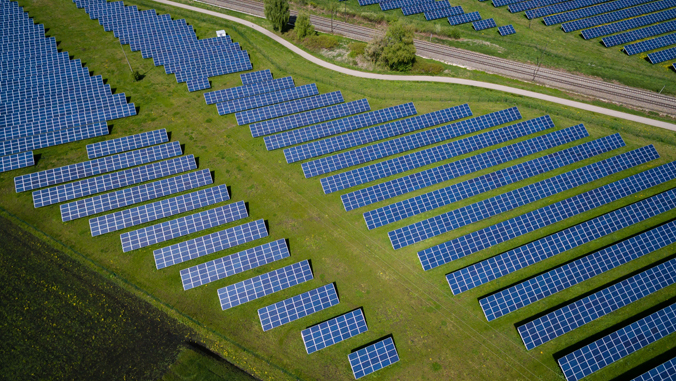
A University of Hawaiʻi at Mānoa team of computer science and climate experts is one of five winners of a national solar forecasting challenge. Nimbus AI took home $50,000 from the American-Made Solar Forecasting Prize, hosted by the U.S. Department of Energy.
Nimbus AI combines historical data, real-time satellite data, weather forecasts and machine learning to make detailed solar predictions, assisting solar power grid managers to estimate how much solar power will be produced based on forecasts, such as cloud cover or other weather-related uncertainties. Competition participants were required to submit future solar forecasts for 10 predetermined locations across the country daily for four weeks. Winning teams had the highest levels of accuracy and presented plans for moving their technologies forward.
Nimbus AI is made up of Peter Sadowski, an Information and Computer Sciences assistant professor; Giuseppe Torri, an Atmospheric Sciences assistant professor; Kyle Hart, a PhD in computer science student; and Geoff Galgon.
“We are really proud of our result. We enjoyed this competition, and working on it gave us lots of ideas for new applications of machine learning to weather forecasting,” Sadowski said. “Many of these research questions could be interesting to graduate students in data science and atmospheric science.”
The team plans to use the $50,000 prize to hire a software engineer. Nimbus AI’s next steps are to commercialize the technology and perform customer research.
“Given the current climate crisis and the situation in Ukraine, it is becoming increasingly clear that energy security is one of the most significant problems humanity faces going forward,” Torri said. “In this context, renewable energy sources offer a clean and simple solution, even though their implementation presents some challenges. It is extremely exciting to be working on a problem that has important societal applications, and we hope to continue to bring innovation to this sector.”
Torri added, “We believe there is a really strong synergy between our work as entrepreneurs and as academics, and we are incredibly grateful to be working in a place like UH that has been extremely supportive throughout our journey.”
Nimbus AI’s continued success
Earlier this year, Nimbus AI was one of 20 teams, and the only one from Hawaiʻi, to be awarded $30,000 for another American-Made Solar Prize from the U.S. Department of Energy to develop its solar forecasting technology into a product. This qualified them for an additional prize of $60,000. The winning teams will be announced later this month.
Nimbus AI also won first place and $5,000 in the 2020 UH Breakthrough Innovation Challenge, and second place and a prize package totaling nearly $20,000 in the 2021 UH Venture Competition. Both events were hosted by the Pacific Asian Center for Entrepreneurship (PACE) in the Shidler College of Business. PACE is the central unit that coordinates and offers educational opportunities for entrepreneurship, innovation and commercialization to students at all 10 campuses of the UH System. Its comprehensive portfolio of programs offer mentorship, training and resources, and are designed to encourage entrepreneurial thinking across disciplines and inspire entrepreneurs to move their ideas from conceptualization to commercialization.
Currently, Nimbus AI is participating in the Ideation Studio@UH Incubator Program with the UH Office of Innovation and Commercialization (OIC), as well as the National Security Innovation Network Emerge Accelerator. In addition, OIC assisted Nimbus AI with helping to license, fund and market their solar-forecasting technology. OIC bridges UH and the community by building partnerships and opportunities around transformative innovation and entrepreneurship. It also supports faculty and staff by helping them manage, protect, commercialize and market UH intellectual property and technology assets developed across its 10 campuses statewide.
UH alumnus wins runner up prize
UH Mānoa mathematics and electrical engineering alumnus Matthew Motoki is one of two runner up winners of $25,000 for the American-Made Solar Forecasting Prize for his company RadianceIQ. Motoki and his company developed an advanced machine learning technique for forecasting that allowed for greater accuracy.
This work is an example of UH Mānoa’s goals of Excellence in Research: Advancing the Research and Creative Work Enterprise (PDF) and Building a Sustainable and Resilient Campus Environment: Within the Global Sustainability and Climate Resilience Movement (PDF), two of four goals identified in the 2015–25 Strategic Plan (PDF), updated in December 2020.
—By Marc Arakaki

